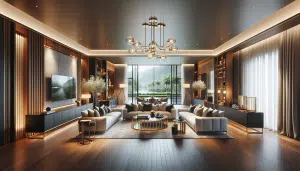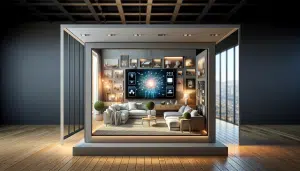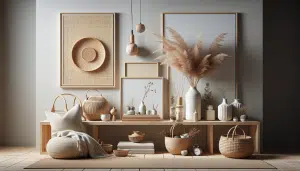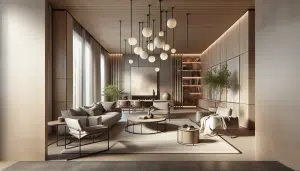Trendy Minimalist Living Room Ideas You’ll Love
Lily Carter October 15, 2025
Step into the world of minimalist living room design with this practical guide. Explore fresh layouts, simple decor tips, color palettes, and smart furniture selection to help your space feel open and effortlessly stylish. Discover how minimalist living can transform comfort and elevate entertainment in your home.
Embracing Minimalism for Modern Living Rooms
Minimalist living is more than a passing trend. It’s a philosophy rooted in making conscious choices about your space and possessions. With the growing popularity of open floor plans and clean lines in home design, minimalist living room ideas are drawing attention from design enthusiasts. The appeal? Simplicity that radiates both comfort and style, creating a restful place for both relaxing and entertaining guests.
Choosing to adopt minimalism for your living room isn’t simply about removing clutter. It’s about curating what really matters. Think about versatile furniture, soothing color palettes, and crisp geometric lines. These elements not only enhance your room’s visual appeal but also contribute to easier cleaning and maintenance. Minimalism encourages you to focus on what you love while letting go of what’s unnecessary, providing a serene backdrop for everyday life.
Why is this lifestyle gaining traction? Many people find peace in uncluttered spaces, with studies suggesting simplicity can reduce stress and boost emotional balance (Source: https://www.apa.org/monitor/2019/01/ce-corner). A minimalist living room serves double duty—functionally sleek and visually calming. If you’re intrigued by how design choices shape mood and well-being, minimalist decor is a compelling area to explore.
Finding the Right Minimalist Color Palette
Color lays the foundation for a minimalist living room. Neutral hues such as white, beige, light gray, and soft taupe remain favorites because they convey a sense of openness and calm. When applied to walls, these shades brighten interiors, making even small rooms feel airy and welcoming. The modern touch often lies in subtle contrasts; pair a cool white wall with a soft charcoal sofa or a pale oak coffee table for balance.
Textures are equally important. While minimalism tends toward monochromatic settings, mixing textures like woven rugs, smooth ceramics, and soft linens adds depth. If you want to introduce a splash of personality, pinpoint your accent. A single deep blue vase or a dusty pink throw offers visual interest without compromising the minimalist feel. These deliberate pops keep the scheme fresh and individual.
Light manipulation also plays a role. Minimalist rooms often maximize natural light with sheer window treatments or strategically placed mirrors. Such illumination amplifies neutral color schemes and makes spaces feel expansive (Source: https://www.nps.gov/tps/how-to-preserve/briefs/57-lighting-building-exterior.htm). The result is a setting that invites natural beauty inside while staying true to modern design principles.
Choosing Furniture That Matches Your Minimalist Vision
Minimalist furniture selection centers around function and form. Less is more. Pieces are chosen with intent, offering utility while complementing a streamlined aesthetic. Opt for sofas with simple silhouettes, coffee tables with clean lines, and storage units that tuck away clutter. Multipurpose furnishings—like ottomans that hide blankets or bookshelves that double as art displays—blend practicality with refined design.
Space layout impacts comfort. In minimalist living rooms, each piece is spaced thoughtfully to allow easy movement. Overcrowding is avoided, with layouts designed for conversation and natural gathering. A single, striking chair could serve as both seating and a visual accent. Modular sofas allow flexibility when needed for gatherings or movie nights. Careful arrangement enhances the sense of order and calm, creating an inviting ambiance for guests.
Quality trumps quantity. It’s better to invest in one solid wood coffee table than several flimsy pieces. Minimalism values longevity and material integrity (Source: https://www.houzz.com/magazine/how-to-furnish-your-home-for-long-term-happiness-stsetivw-vs~93391180). Choose durable, easy-to-care surfaces and timeless silhouettes. This approach supports sustainable living and ensures your living room remains stylish with just minor seasonal tweaks.
Decluttering Techniques for an Open-Concept Space
Decluttering lies at the heart of minimalist living room design. Start by evaluating each item’s purpose—does it serve a function or hold significant meaning? If not, consider removing or donating it. Organization is key. Invisible storage—such as baskets under the sofa or built-in shelves—keeps daily items tucked away, preserving the visual flow of the room.
Decluttering is an ongoing process, not a one-time task. Adopting the practice of annual reviews prevents unnecessary build-up. Many find visual clarity brings a sense of mental calm, which can enhance relaxation and family interactions. Decluttering also helps small apartments or lofts appear more spacious, as open sight lines create the illusion of roominess (Source: https://www.nytimes.com/guides/smarterliving/how-to-declutter-your-home).
Digital minimalism is another growing area. Limit remote controls, game consoles, and excess tech in your entertainment area. Streamlined cable management and multipurpose smart devices can reduce clutter further. As home technology expands, integrating minimal aesthetics ensures your space feels calm rather than chaotic.
Stylish Accessories That Don’t Compromise Simplicity
Minimalist accessories are intentional additions. Rather than filling shelves or surfaces, choose one or two statement pieces for each zone. An abstract painting, a single oversized plant, or a group of matching ceramic vases brings character. Negative space—empty wall or table areas—becomes an important design feature, guiding the eye and providing rest amidst subtle detail.
Personal mementos deserve a place, too, but curate them carefully. Framed family photos or a favorite sculpture can serve as focal points. Curating your accessories supports the minimalist principle of “less, but better.” Displaying objects in odd-numbered groupings—a trio of candlesticks, for example—adds sophistication while preventing visual chaos (Source: https://www.architecturaldigest.com/story/minimalism-design-style).
Soft furnishings anchor your style. A neutral area rug defines seating without drawing unnecessary attention. Throws and cushions in natural fibers like linen or wool add comfort and tactile interest. Just a single bold design—a geometric patterned cushion or a sculptural lamp—can set the mood. This “add then subtract” approach lets your personality shine, while keeping clutter at bay.
Entertaining and Everyday Living in a Minimalist Setting
Minimalist living rooms excel as entertaining spaces. With flexible layouts, streamlined tech setups, and plenty of open space, they adapt easily from a quiet movie night to a lively gathering. Smart home entertainment systems can remain tucked away until needed. When entertaining, mobile furniture—side tables, poufs, or stacking stools—adds flexibility without crowding the space.
Everyday routines benefit, too. Simple layouts mean cleaning is quicker, and family members of all ages can enjoy plenty of free space for games, yoga, or reading. Natural light, unobstructed by heavy drapes or crowded decor, creates a cheerful spot for morning routines or coffee. Minimalism inspires healthier habits by removing distractions and encouraging more meaningful interactions.
To keep the room lively, rotate accessories or seasonal elements. A vase of fresh eucalyptus in summer, cozy woven throws in winter—subtle changes keep the space inviting year-round, without adding clutter. Minimalist living isn’t restrictive; it invites creativity and function within a beautiful, restful atmosphere (Source: https://www.dezeen.com/2022/07/07/minimalist-homes-roundups/).
References
1. American Psychological Association. (2019). Declutter your home, declutter your mind. Retrieved from https://www.apa.org/monitor/2019/01/ce-corner
2. Houzz. (n.d.). How to furnish your home for long-term happiness. Retrieved from https://www.houzz.com/magazine/how-to-furnish-your-home-for-long-term-happiness-stsetivw-vs~93391180
3. National Park Service. (n.d.). Lighting the building exterior. Retrieved from https://www.nps.gov/tps/how-to-preserve/briefs/57-lighting-building-exterior.htm
4. The New York Times. (n.d.). How to declutter your home. Retrieved from https://www.nytimes.com/guides/smarterliving/how-to-declutter-your-home
5. Architectural Digest. (2020). Minimalism is a design style, but it’s also a way of life. Retrieved from https://www.architecturaldigest.com/story/minimalism-design-style
6. Dezeen. (2022). Ten minimalist homes that make the most of simple design. Retrieved from https://www.dezeen.com/2022/07/07/minimalist-homes-roundups/







